Switching to servo-hydraulics: A brief guide to the system
Lesedauer ca. 7 min.

In servo-hydraulic systems, uncontrolled standard motors are replaced by precisely controllable servo motors.
The servo-hydraulic drive system
In servo-hydraulic systems, uncontrolled standard motors are replaced by precisely controllable servo motors. The most important advantage of these speed-controlled pump drives is their more efficient metering of the energy introduced and therefore enhanced energy efficiency. Further bonuses of servo-hydraulics are their optimized control quality, compactness and lower noise emissions. This is why the concept of combining hydraulic power transfer with the principle of speed-controlled power supply has become a standard solution in many applications for some years now.
Changing over from conventional hydraulic systems with standard motors to servo-hydraulics is particularly worthwhile if the machining cycle includes many or long pause times or partial load ranges in which no hydraulic power is removed. Retrofit solutions may also be a good idea and may significantly improve the energy efficiency of existing machines. Switching to a servo-hydraulic drive is not rocket science, and the advantages are apparent over the entire service life of the machine.
You can find a comparison of classic hydraulic drives with servo-hydraulic systems and some application examples here

Once you have made the decision to switch to servo-hydraulics, the next step is the system architecture. There are a number of points to consider here that do not apply to conventional hydraulic systems with standard motors.
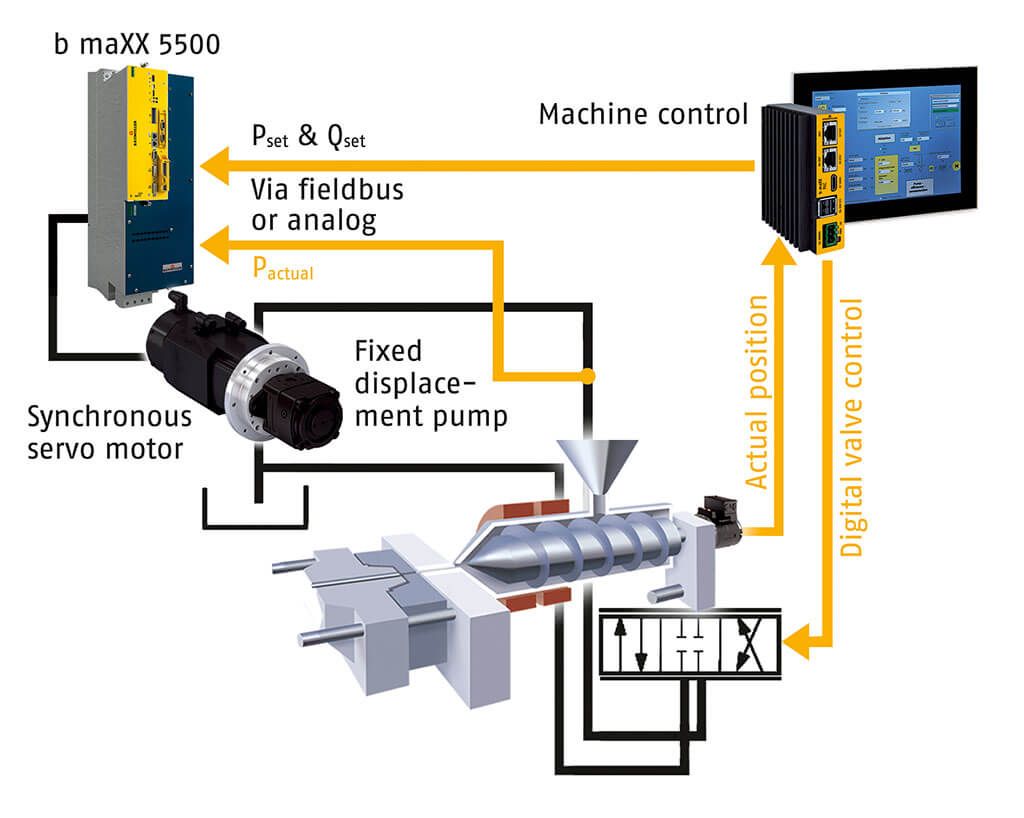
An example of the structure of a servo-hydraulic system in an injection molding machine
A servo-hydraulic system consists of a servo converter that drives a synchronous servo motor. This motor drives a constant pump. The pressure and volume flow set values are sent from the control unit to the converter. Pressure and flow rate are controlled on the converter by adjusting the speed. As in the conventional hydraulic systems with standard motors, the actual positions are read out via the machine control unit. For the design of the drive system, the mechanical engineer passes on the values for the required flow rate and pressure to the system supplier, e.g. Baumüller. Baumüller takes over the design of the entire drive system, including the pump, the motor, and the converter.
The hardware: pump
Constant pumps are generally used in servo-hydraulic systems. Baumüller can work with any of the standard pump manufacturers on request. Numerous manufacturers have their own series for variable-speed operation in their product range that exactly meets the requirements of servo-hydraulic systems and is designed for high accelerations. Compared to an uncontrolled hydraulic system with a standard motor, the pump will be smaller because decoupling from the mains is a frequent occurrence. This allows a higher speed and smaller pump dimensions.
As a special feature, Baumüller offers three different options for the connection between the pump and motor. In the Standard Line, the attachment is made using the conventional solution of coupling and pump support. This tried-and-tested option can be achieved with a standard motor shaft and motor flange and is flexible due to the separate components. The second development stage, the Advanced Line, describes the direct attachment of the pump on the motor via internal toothing. Here there is no need for a pump support and coupling, so the system is more compact and robust. Omitting the pump support as a resonating body also reduces the noise impact. In the third stage, the Performance Line, the hydraulic fluid is additionally used for intelligent circulating oil lubrication. For this purpose, connections were added not only to the motor but also to the constant pump, allowing the leakage flow of the pump to be used for the permanent lubrication of the toothing. This eliminates an otherwise necessary grease lubrication of the internal toothing, which would be due every 3,000 operating hours on average, also rendering the system particularly robust. Baumüller thus offers a solution registered for patent, which leads to significantly reduced service costs in operation.
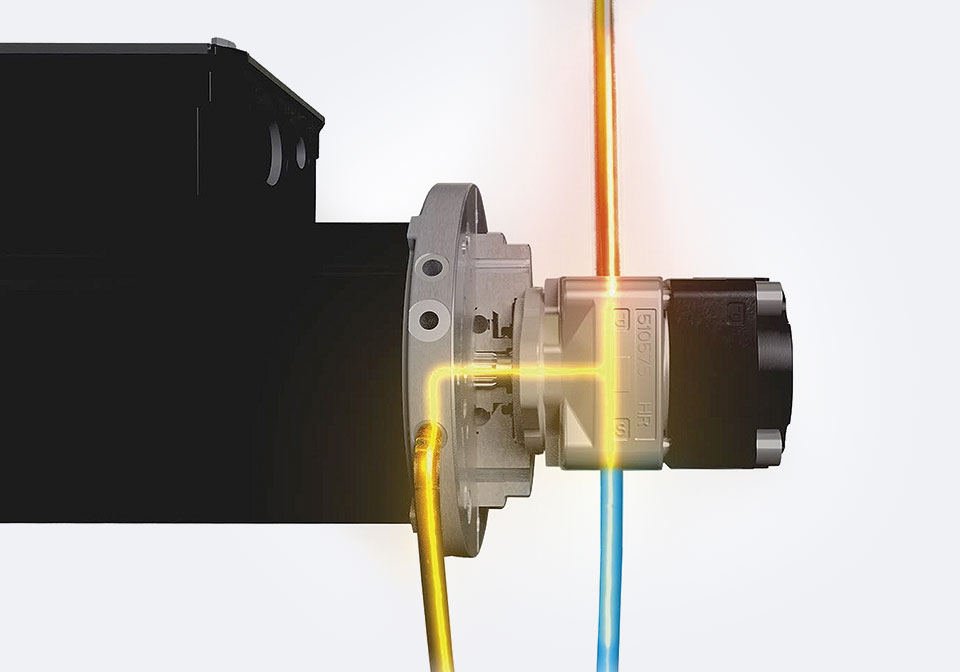
Baumüller's permanently lubricated internal toothing is registered for patent and uses the leakage flow of the hydraulic oil for lubrication, which significantly reduces the required maintenance
The hardware: motor
Permanent magnet synchronous motors are used as motors in servo-hydraulic systems. The main criterion for selecting servo motors is good performance in terms of dynamics and overload capacity. The speed range also plays a major role in motor selection, as the pumps can run at up to 6,000 rpm, which is then also required of the motor. Baumüller offers various motor series for use in servo-hydraulic systems, from the dynamic three-phase current servo motor DSD2 to the three-phase current synchronous motor DS2. This allows a wide performance range to be covered. The oil cooling option affords additional advantages. Liquid-cooled motors have a higher power density than air-cooled motors and can therefore be designed with smaller dimensions. In a hydraulic system, it makes sense to exploit these advantages, since there is oil in the machine anyway. Baumüller offers its servo motors in sizes 45 to 132 with oil cooling. The synchronous main drives are available as an oil-cooled version from size 100 up to size 200.
The hardware: converter
Also referred to as the servo drive, the converter constitutes the biggest difference to an uncontrolled hydraulic system. It plays a key role in the selection of the appropriate system. The servo drive contains the software for pressure and flow rate control and for numerous other functions, e.g. pump monitoring. In addition, the converter must offer the right interfaces to integrate the drive system into the machine. The Baumüller b maXX 5000 and b maXX 3000 converter series have analog interfaces for the pressure sensors and interfaces for all common fieldbuses, enabling a simple connection to the central control unit. When switching from a hydraulic system with a standard motor, the requirements for the central control unit do not change, so mechanical engineers have the option of working with their customary control types. The motor and the converter are designed as a package tailored to the performance requirements. It is advantageous if the electronics also have oil cooling, as the medium is already present in the machine. Baumüller b maXX 5000 servo drives feature the oil cooling option.
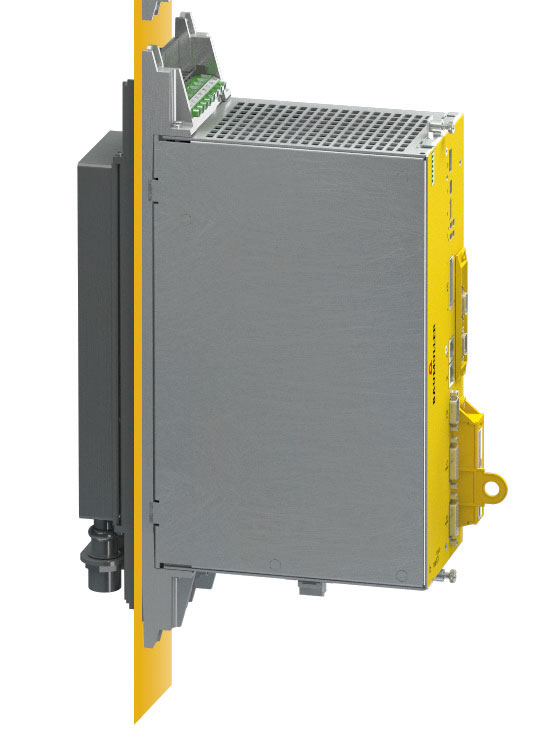
With the practical push-through technology of b maXX 5000 Baumüller offers water-cooled drives
The hardware: IoT and controls
At Baumüller, the servo-hydraulic system is an entirely drive-based solution. This means that the requirements for the central control unit do not change when switching from a standard motor to a regulated servo motor. The interfaces for connecting the control unit to the machine remain the same. The system can be implemented with a wide variety of control unit types, regardless of the manufacturer.
For more transparency in production, the servo drives offer intelligent functionalities that further improve the performance of servo-hydraulic systems. The permanent collection, evaluation and transfer of data in the converter allows the continuous monitoring and visualization of the technical status of a machine or system. Certain events can thereby be calculated in advance, so that possible machine failures can be detected at an early stage and maintenance intervals can be planned based on wear.
Optimized process sequences are achieved, for example, by means of intelligent control algorithms, such as adaptive pressure precontrol. With this algorithm, the software enables an overshoot-free pressure jump in minimum time and completely automatically, with a smooth transition in just a few milliseconds.
The software
The software, which includes all functionalities for operating the servo-hydraulic system, is integrated directly in the servo converter and is fundamentally responsible for ensuring maximum utilization of the advantages of servo hydraulics. A graphical user interface is used for the parameterization of the converter. Baumüller's guided commissioning makes it possible to commission the system quickly, even without in-depth programming knowledge or profound expertise in servo drive technology. Parameterization can also be carried out by Baumüller experts as a service, and they can also offer support with optimizations and challenges in series production.
In addition to the required standard functionalities, such as pressure and flow rate control or online data set switching, the latest Baumüller v2+ software for servo-hydraulic systems includes numerous protection and monitoring functions that further enhance the performance and reliability of the system.
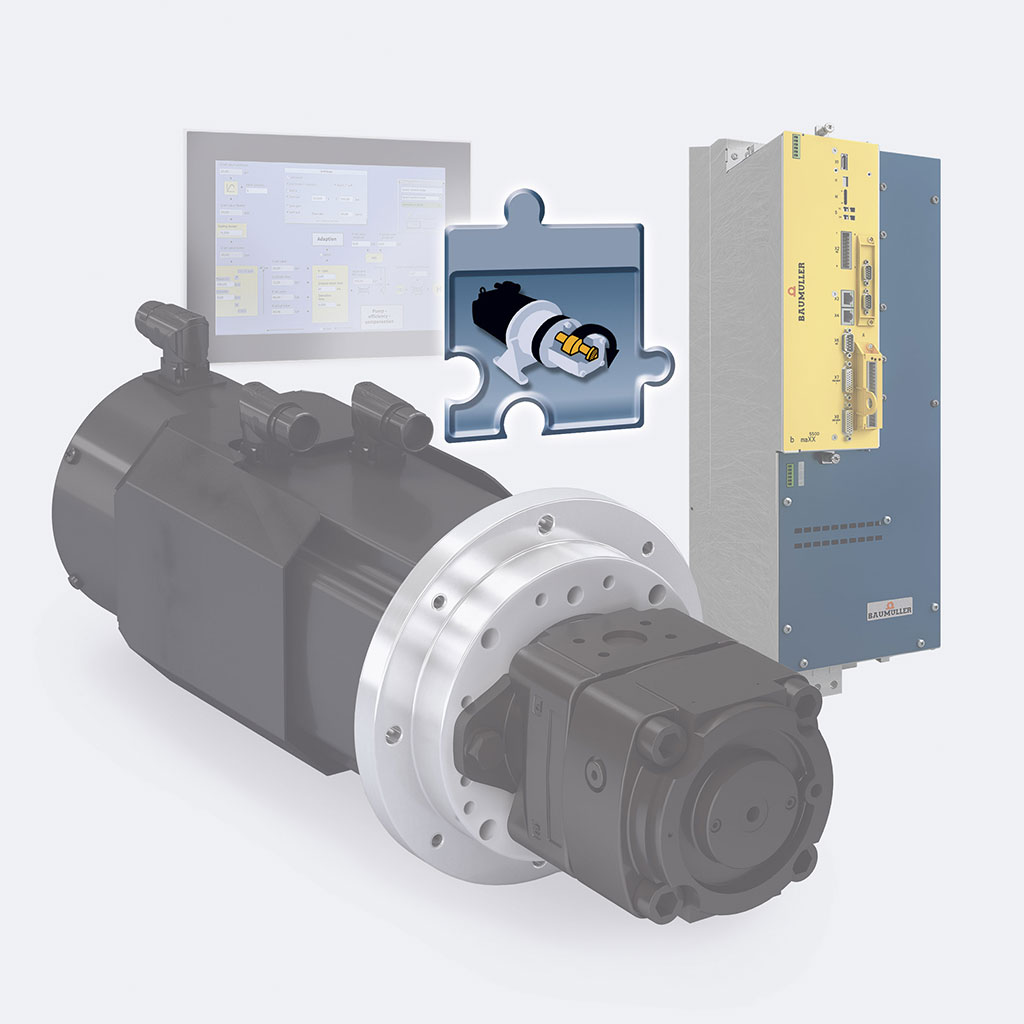
The service
As a system provider, Baumüller can take over the design of the drive system as well as the commissioning and support up to the point where it is ready for series production. Baumüller supports the machine builder with its many years of experience and the necessary know-how when changing the system.
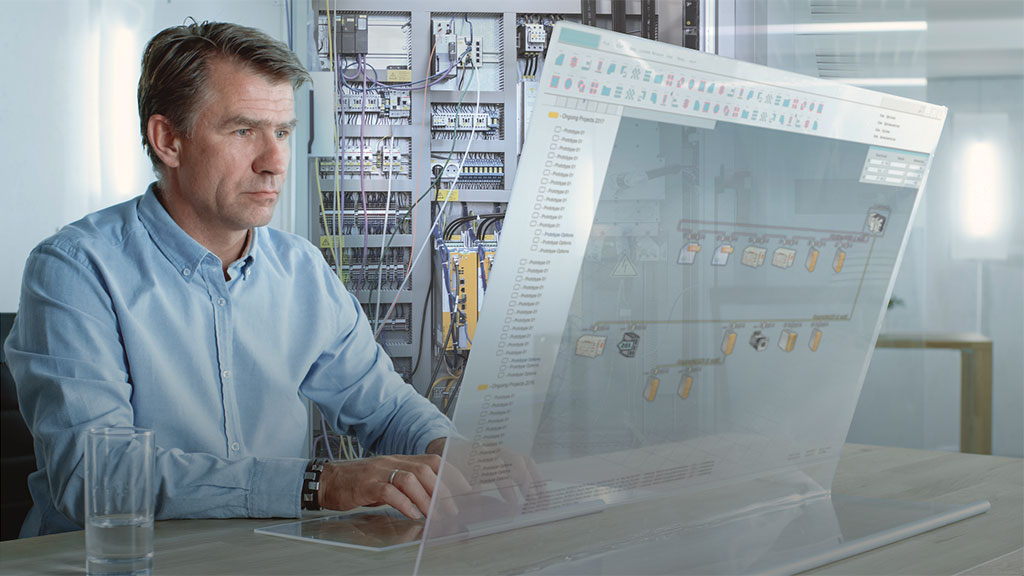
Do you have further questions?
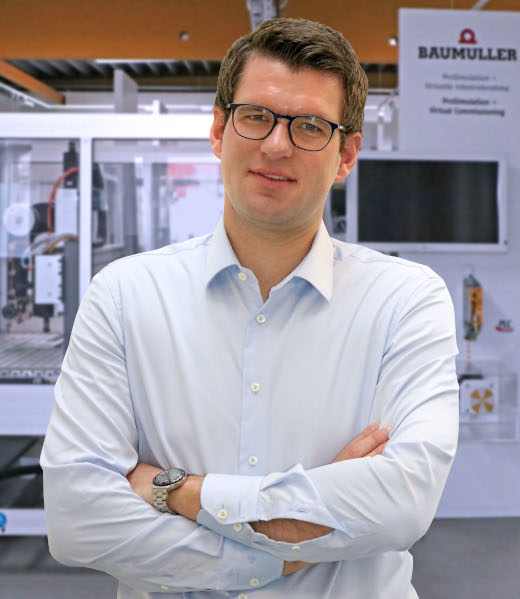
Michael Stiegler
Applications



